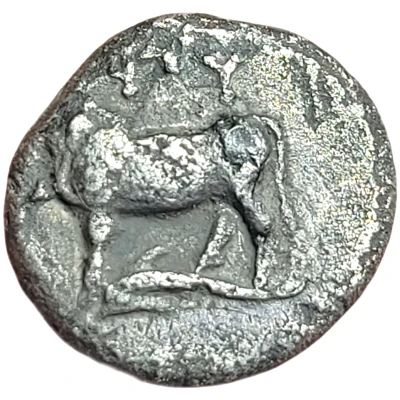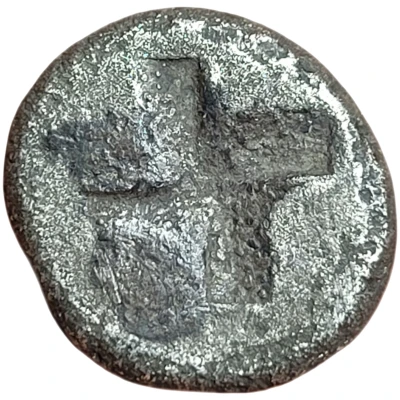


© mariogrrode
Hemiobol 416 BC - 357 BC
| Silver | 2.3 g | 12 mm |
| Issuer | Byzantion (Thrace) |
|---|---|
| Type | Standard circulation coin |
| Years | 416 BC - 357 BC |
| Value | Hemidrachm (½) |
| Currency | Drachm |
| Composition | Silver |
| Weight | 2.3 g |
| Diameter | 12 mm |
| Thickness | 2 mm |
| Shape | Round (irregular) |
| Technique | Hammered, Incuse |
| Demonetized | Yes |
| Updated | 2024-10-10 |
| Numista | N#7724 |
|---|---|
| Rarity index | 87% |
Reverse
Hollow square, scattered with dots, arranged in "mill wings".
Edge
Plain
Interesting fact
The Hemiobol coin was used in ancient Greece and was equivalent to half an obol, which was the standard unit of currency at the time. The Hemiobol coin was made of silver and weighed 2.3 grams, making it a valuable and widely used coin in its time. It's interesting to note that the Hemiobol coin was used in a time when currency was still a relatively new concept, and it played an important role in the development of trade and commerce in ancient Greece. The coin's design and value were carefully regulated by the government, and it was widely accepted as a form of payment for goods and services. Overall, the Hemiobol coin is a fascinating piece of history that provides insight into the early days of currency and trade in ancient Greece.